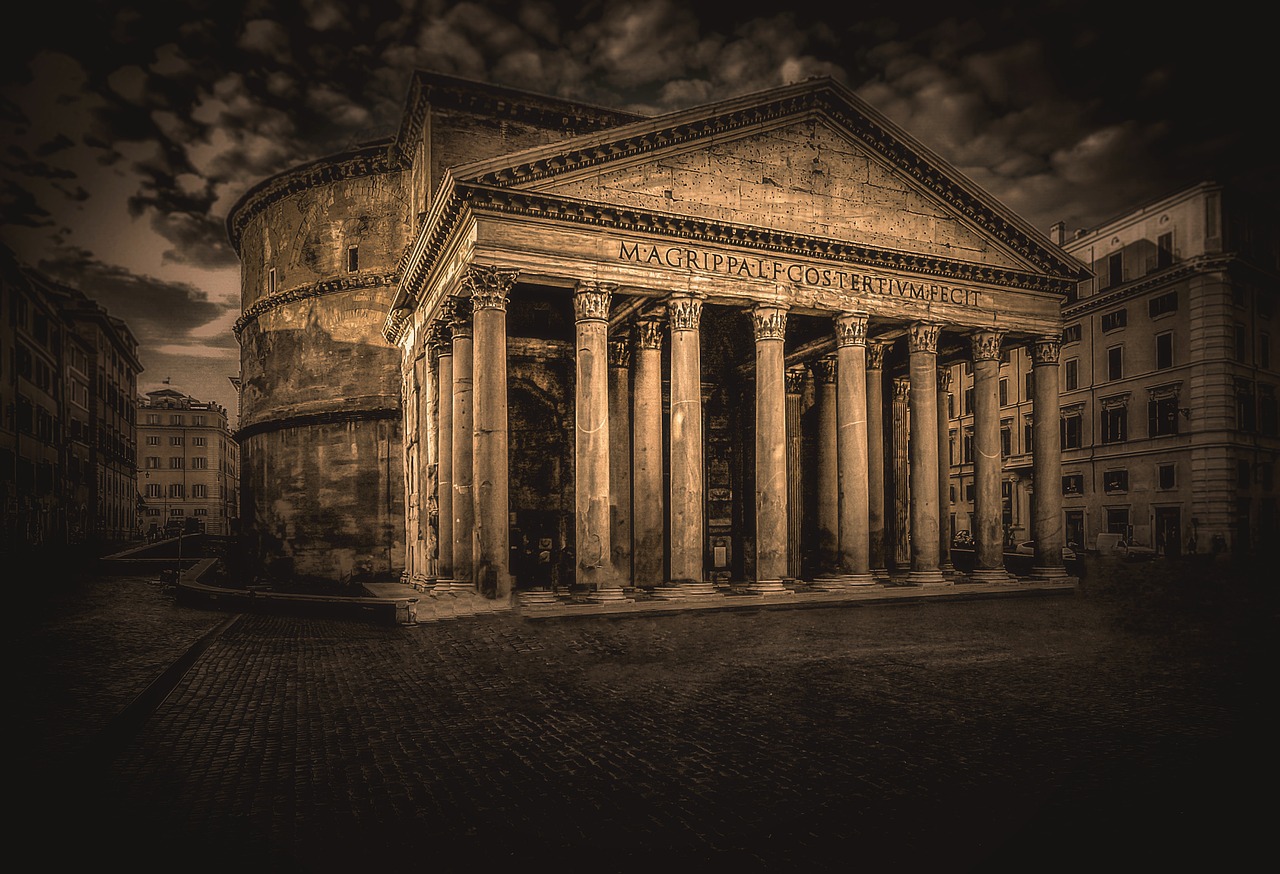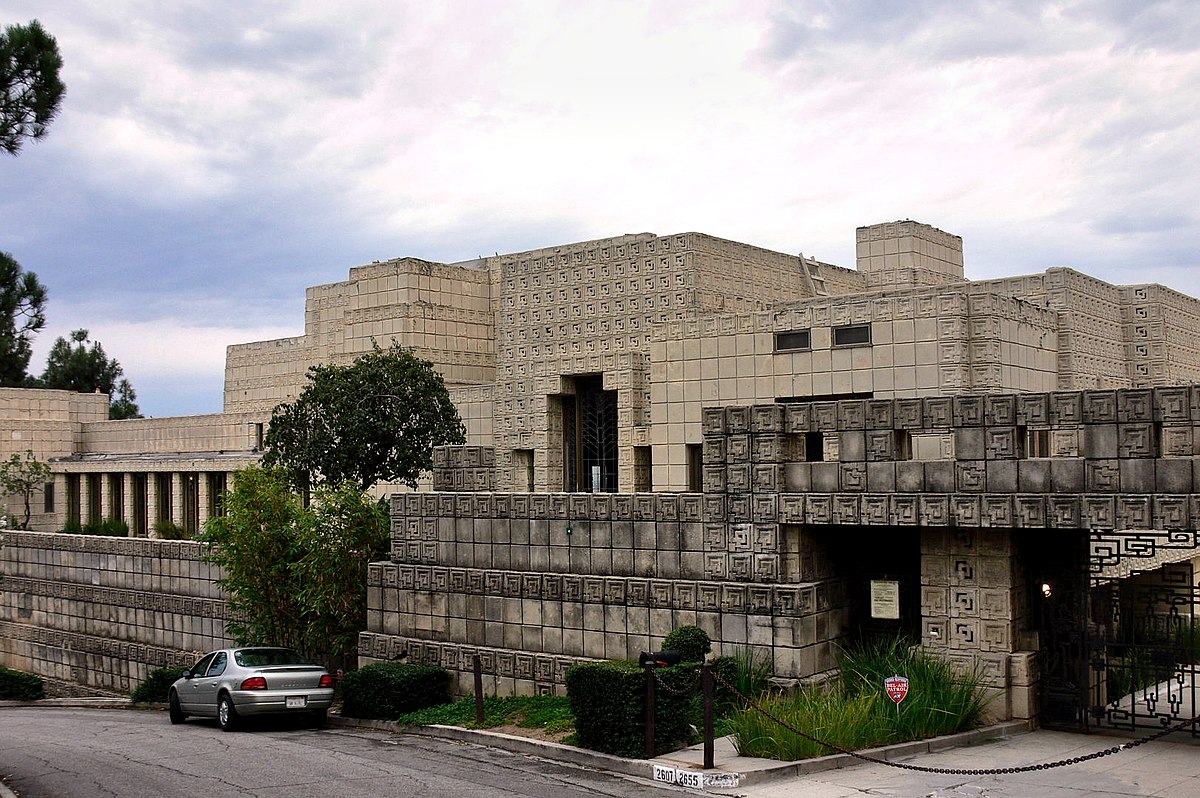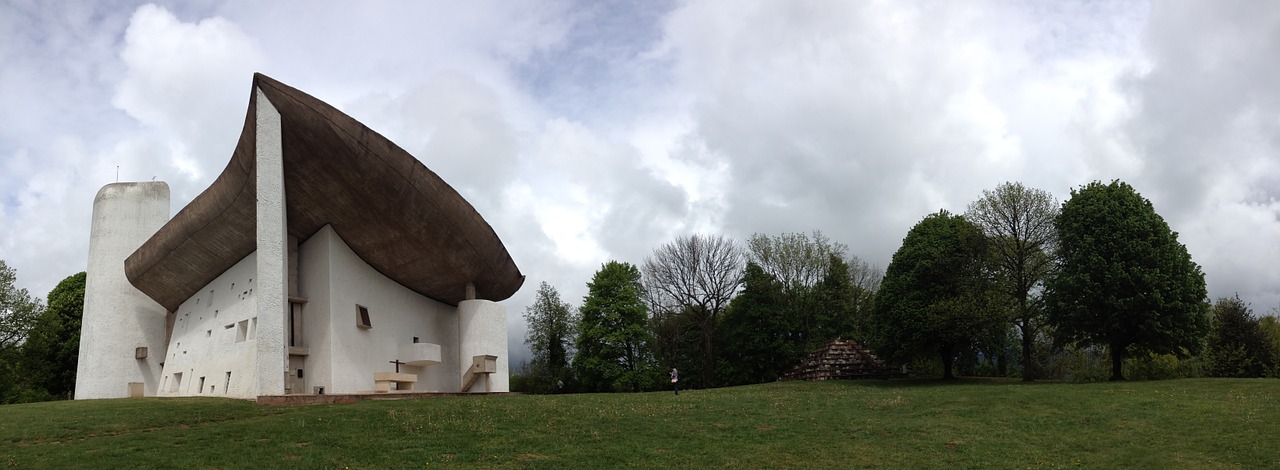I materiali dell'Architettura: Il Calcestruzzo// Materials of Architecture: The concrete [ITA - ENG]

CCO Creative Commons Pantheon, Roma

Ciao amici di steemit,
prima di passare all’argomento di oggi, voglio ancora una volta ringraziarvi per avere apprezzato i miei articoli, cosa che, oltre che farmi un immenso piacere, mi serve da stimolo per proseguire ancora la mia avventura con voi in questo social!
Bene, premesso tutto ciò, veniamo a noi. Oggi cominciamo un nuovo percorso nel mondo della storia dell’architettura parando di un nuovo materiale, anch’esso dalle origini antiche e dalle tante evoluzioni fino all’età moderna e contemporanea: signori lettori, da oggi si parla di… calcestruzzo!
Il calcestruzzo è un materiale dalle origini antiche ma allo stesso tempo è straordinariamente contemporaneo per le sue qualità prestazionali ed estetiche, tanto che lo si può tranquillamente ritenere il materiale più usato del XX e, volendo sbilanciarci, probabilmente anche del XXI secolo. I settori cui è destinato sono naturalmente l’edilizia e l’architettura in generale nonché le infrastrutture.
Prima di addentrarci in questo nuovo viaggio nella storia dell’architettura è bene conoscere un pochino meglio il materiale protagonista della nostra prossima, imminente, avventura. E allora, cos’è esattamente questo calcestruzzo? Scopriamolo subito!
Cos'è il Calcestruzzo
Quando si usa il termine calcestruzzo in realtà si fa riferimento ad un materiale composito, ovvero un materiale ottenuto per presa e successivo indurimento di una particolare miscela composta, in linea generale e nelle dovute proporzioni, da: cemento, che funge da legante, acqua e inerti o aggregati, sia fini che grossi.
Il conglomerato che si ottiene, varia in funzione delle caratteristiche dei suoi componenti, nonché dei loro rapporti quantitativi e qualitativi. Questo significa che ogni possibile conglomerato prodotto avrà delle proprie specifiche caratteristiche e, di conseguenza, diverse possibili applicazioni pratiche.
Una volta indurito, il prodotto varia la sua resistenza in funzione di determinati fattori quali, in primis, il rapporto acqua/cemento, l’acqua dell’impasto deve infatti risultare limpida e avere una percentuale di sali minima, così da non essere dannosa e/o aggressiva. Il calcestruzzo risulta più resistente quando, a parità di contenuto di cemento, la quantità d’acqua è minore.
Ma ci sono anche altri fattori che influenzano la resistenza di un composto, come la qualità e le caratteristiche meccaniche e geometriche degli inerti, le modalità con cui avviene il mescolamento e la messa in opera e la compattazione.
Un fattore che migliora la lavorabilità del calcestruzzo e le sue qualità prestazionali è l’impiego dei cosiddetti additivi, ovvero degli agenti che possono essere: acceleranti, ritardanti, fluidificanti, aeranti, impermeabilizzanti.
Un particolare tipi di calcestruzzo è il calcestruzzo alleggerito, caratterizzato da inerti come polistirolo, argilla espansa, pomice, gesso, fibre vegetali ecc., la cui peculiare caratteristica è il basso peso specifico ma anche, come si intuisce dalla denominazione, la leggerezza, e altri importanti requisiti come un buon isolamento termico, e così via. In funzione della resistenza a compressione, generalmente inferiore rispetto ai calcestruzzi normali, si ottengono calcestruzzi leggeri non strutturali e strutturali, questi ultimi con resistenza comparabile ai calcestruzzi normali.
- I Leganti
Si definiscono leganti tutti quei materiali che, impastati con acqua, assumono col tempo una consistenza litoide, ovvero simile alla pietra, passando per due fenomeni di trasformazione detti presa e indurimento. Tradizionalmente sono 4 i tipi di leganti impiegati: calci, agglomerati cementizi, gessi, cementi.
Le calci sono forse i leganti più antichi e in funzione di come avviene la presa sono classificati in:
-calci aeree, derivate dalla cottura fra gli 800 e 900 gradi di rocce calcaree;
-calci idrauliche, quando la presa avviene con l’acqua a temperature di cottura superiori a 1000 gradi.
Gli agglomerati cementizi, che presentano migliori caratteristiche fisiche rispetto alle calci idrauliche ma minore resistenza a compressione.
I gessi sono i leganti idraulici che vengono impiegati per interni.
I cementi sono invece caratterizzati da elevate resistenze meccaniche. Sono classificabili in base alla resistenza e composizione. Dal punto di vista dei componenti si distinguono in: cementi naturali o Portland e cementi artificiali. Questi ultimi a loro volta si distinguono in cementi pozzolanici, cementi d’alto forno, e cementi speciali.
- Gli inerti
Gli inerti, fini o grossi, sono costituiti da sabbia, pietrisco o ghiaia. Devono essere costituiti da elementi non gelivi, privi di parti friabili, polverulenti, terrose o di altre sostanze che possono risultare dannose all’indurimento dell’impasto. E’ importante, inoltre, che gli elementi siano di diverse dimensioni in modo da ridurre al minimo i vuoti, ottenendo così una maggiore compattezza dell’impasto.
Bene ragazzi, per oggi direi che ci possiamo fermare qui. Adesso che abbiamo fatto le dovute presentazioni siamo pronti a conoscere la straordinaria storia di questo materiale e dunque, esattamente come abbiamo fatto con gli altri materiali precedentemente trattati, vedremo quali sono le origini e le diverse evoluzioni che hanno trasformato e migliorato questo materiale da costruzione, rendendolo anch’esso capace di rivoluzionare il mondo dell’architettura fino ai giorni nostri. Come sempre, arrivati a questo punto, io vi rinnovo il mio grazie per avermi letto, e vi do appuntamento alla prossima, vi abbraccio tutti!
L'Ego dice: "Quando ogni cosa andrà a posto troverò la pace".
Lo Spirito dice: "Trova la pace e ogni cosa andrà a posto".

CCO Creative Commons Casa Ennis, Frank Lloyd Wright

Hi friends of steemit,
before moving on to the topic of today, I want to thank you again for appreciating my articles, which, in addition to making me an immense pleasure, serves as a stimulus to continue my adventure with you in this social!
Well, given all this, we come to us. Today we begin a new path in the world of architectural history, parando of a new material, also from ancient origins and from many evolutions until the modern and contemporary age: gentlemen readers, from today we talk about... concrete!
Concrete is a material with ancient origins but at the same time is extraordinarily contemporary for its performance and aesthetic qualities, so much so that it can easily be considered the most used material of the XX and, wanting to unbalance, probably also of the XXI century. The sectors it is intended for are of course construction and architecture in general as well as infrastructure.
Before embarking on this new journey in the history of architecture it is good to know a little better the material protagonist of our next, imminent, adventure. So what exactly is this concrete? Let's find out right away!
What is the concrete
When the term * concrete * is used, in reality reference is made to a composite material, ie a material obtained by gripping and subsequently hardening a particular mixture, in general and in the proper proportions, from: cement, which acts as a binder, water and inert or aggregate, both fine and large.
The conglomerate that is obtained varies according to the characteristics of its components, as well as their quantitative and qualitative relationships. This means that every possible conglomerate product will have its own specific characteristics and, consequently, several possible practical applications.
Once hardened, the product varies its resistance depending on certain factors such as, first of all, the water/cement ratio, the water of the mixture must in fact be limpid and have a minimum percentage of salts, so as not to be harmful and/or aggressive. The concrete is more resistant when, with the same cement content, the amount of water is lower.
But there are also other factors that influence the resistance of a compound, such as the quality and the mechanical and geometrical characteristics of the aggregates, the ways in which mixing is carried out and the putting into operation and compacting.
One factor that improves the workability of concrete and its performance qualities is the use of so-called additives, ie agents that can be: accelerating, retarding, fluidizing, aerating, waterproofing.
A particular type of concrete is lightened concrete, characterized by aggregates such as polystyrene, expanded clay, pumice, gypsum, vegetable fibers, etc., whose peculiar characteristic is the low specific weight but also, as can be inferred from naming, lightness, and other important requirements such as good thermal insulation, and so on. Depending on the compressive strength, generally lower than normal concretes, light, non-structural and structural concretes are obtained, the latter with resistance comparable to normal concretes.
- The Binders
Binders are all those materials that, mixed with water, over time assume a lithoid consistency, that is similar to the stone, passing through two phenomena of transformation called gripping and hardening. Traditionally, there are four types of binders used: limes, cement agglomerates, chalks, cements.
The kicks are perhaps the oldest binders and depending on how the grip takes place are classified into:
-aerial limes, derived from cooking between 800 and 900 degrees of limestone;
-hydraulic limes, when the intake takes place with water at cooking temperatures above 1000 degrees.
The cement agglomerates, which have better physical characteristics than hydraulic limbs but lower compressive strength.
The chalks are the hydraulic binders that are used for interiors.
The cements are instead characterized by high mechanical strength. They are classifiable based on strength and composition. From the point of view of the components they are distinguished in: natural cements or Portland and artificial cements. The latter in turn are divided into pozzolanic cements, high kiln cements, and special cements.
- The aggregates
The aggregates, fine or thick, consist of sand, crushed stone or gravel. They must consist of non-gelling elements, without friable, powdery, earthy parts or other substances that may be harmful to the hardening of the mixture. It is also important that the elements are of different sizes so as to minimize the voids, thus obtaining a greater compactness of the dough.
Well guys, for today I would say that we can stop here. Now that we have made the necessary presentations we are ready to know the extraordinary history of this material and therefore, exactly as we did with the other materials previously treated, we will see what are the origins and the different evolutions that have transformed and improved this building material, also making it capable of revolutionizing the world of architecture up to the present day. As always, at this point, I renew my thanks for reading, and I'll meet you next time, I embrace you all!
The ego says: "When everything goes right I will find peace"
The Spirit says: "Find peace and everything will fall into place"

CCO Creative Commons Cappella di Ronchamp, Le Corbusier
Interessante. Spesso si conosce il nome ma non tutti i dettagli tecnici che ci sono dietro, i loro usi e la loro origine.
Ti ringrazio! Scusa se rispondo solo oggi ma sono state giornate davvero piene. Ci si legge! ;)
Being A SteemStem Member